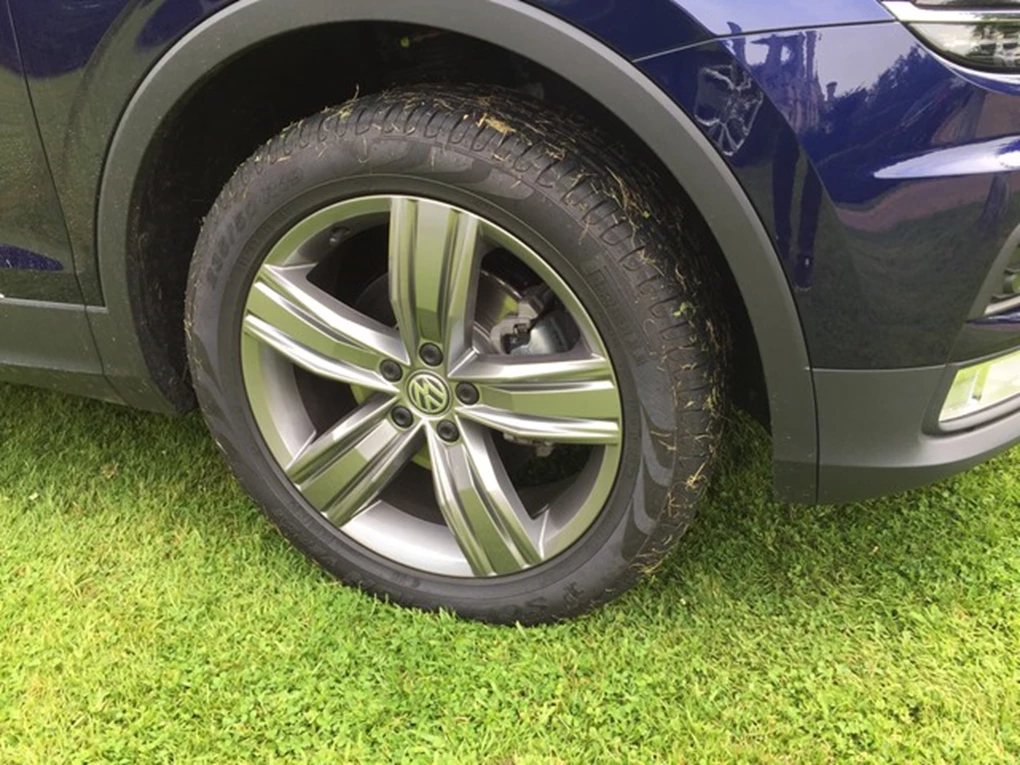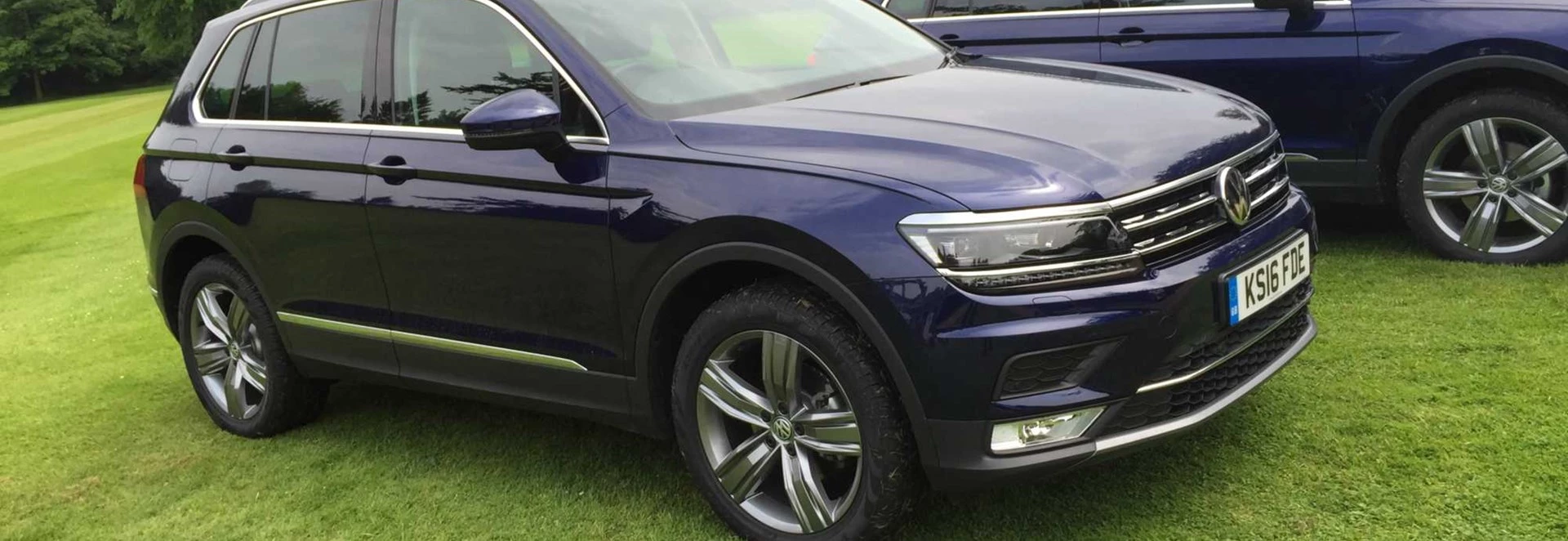The Volkswagen Tiguan has won lots of fans thanks to its handsome looks, practical interior and relatively compact size. It arrived just as the SUV market was going into hyperdrive, with lots of customers looking for vehicles with a high seating position and rugged looks, but the running costs of a hatchback or saloon car.
Still based on the Golf, but with all-new ‘MQB’ underpinnings, the Tiguan is now longer, lower and wider than before. It’s still available with either front- or rear-wheel drive, with more expected to go for the latter than is common amongst rivals.
Performance
Power in the Tiguan ranges from 113bhp to 237bhp, with the most popular choice expected to be the mid-range 2.0-litre TDI diesel with 148bhp mated to a six-speed manual. We tested it with front-wheel drive and it proved smooth and felt plenty quick enough for a car in its class. Zero to 62mph acceleration takes 9.3 seconds, making it faster than any diesel Nissan Qashqai, while an impressive 340Nm of pulling power should make light work of towing.
Unsurprisingly, the front-wheel drive Tiguan didn’t struggle for grip on the road, despite heavy rain, but it clearly won’t be as capable off-road as the 4MOTION model. It does still get a small wheel by the gear lever to adjust your driving modes through ‘Eco’, ‘Normal’ and ‘Sport’, but there’s no off-road mode. Changing the settings is most noticeably felt through the steering, which gets weightier in ‘Sport’ mode, or if you have the six-speed automatic DSG gearbox, as its shifts move further up the rev range.
Ride and Handling
The steering impresses, being light, but with a pleasant feel and just enough feedback from the road below.
The Tiguan used to look fairly tall, but not anymore, because a 33mm drop in height, with a 30mm increase in width has made the newest version noticeably squatter. It also boasts huge wheel arches, so even the standard 17-inch alloys look fairly diminutive, while the top R-Line trim gets 20-inch items. The SE Nav version we tested came with 18-inch wheels and fairly substantial run-flat tyres, and on a winding B-road the Tiguan has little body roll and an abundance of grip. The steering impresses, being light, but with a pleasant feel and just enough feedback from the road below. But, the Tiguan is also surprisingly firm, picking out too many road imperfections and never feeling particularly settled. This is a shame in class where comfort tends to take priority over handling, and more odd given the Golf Alltrack we drove over the same road glided over bumps which jostled the Tiguan. At its launch in Barcelona, the closely related SEAT Ateca, didn’t appear to have an overly firm ride, but we’ll need to drive it in the UK to be sure.
Interior and Equipment
More than 2.8 million Tiguan’s have been sold worldwide, with 100,000 finding homes in the UK between 2008 and 2016.
The Tiguan’s interior is typically VW, with slabs of dark soft-touch plastic accentuated by crisp lines and metal trim. It feels well-made and expensive, and you still get a noticeably raised seating position for improved visibility. There’s not too much to excite, however, unless you go for the optional (standard on SEL and above) Active Info Display, which replaces the conventional gauges with a 12.3-inch display. This does bring a welcome dash of intrigue to the cabin, along with customisable displays for the sat-nav and almost anything else you can think of. Trim levels are S, SE, SE Navigation, SEL and R-Line, with the SE Navigation expected to be the most popular. All models are well-equipped, with roof rails, an eight-inch touch-screen display, Bluetooth, DAB and an impressive roster of safety kit, including a bonnet which lifts in a collision with a pedestrian – a first for Volkswagen. Interior space is up, with 29mm more rear knee room and 145 litres more (1,655 litres) boot space with the rear seats folded flat. The rear bench can also still slide, but now by 180mm, a 20mm improvement, and a feature lacking in models like the Kia Sportage. The boot measures 615-litres with the rear seats slid all the way forwards.
Cost
Pricing has stepped up a gear in the new Tiguan
Pricing has stepped up a gear in the new Tiguan, with the model we tested coming in at £28k before options, making it more expensive than the Qashqai, Kadjar or Sportage. It will also be several grand more than the SEAT Ateca, which shares many of the Tiguan’s attributes. Running costs should be strong though, with a claimed economy figure of 58.9mpg and emissions of 125g/km of CO2. Choose the 4MOTION version of the same engine and emissions increase to 141g/km.
Our Verdict
There’s no doubting the Tiguan is thoroughly improved, with lots of new technology to get excited about and a comprehensive engine line-up. The interior is more practical too, with lots of useful storage cubbies. But, the ride comfort seems less pliant than before and the Tiguan has been priced above many of its rivals, so it won’t suit everyone. We’ll be especially interested to see if the SEAT Ateca may even be the better buy from the VW Group small SUV stable.






